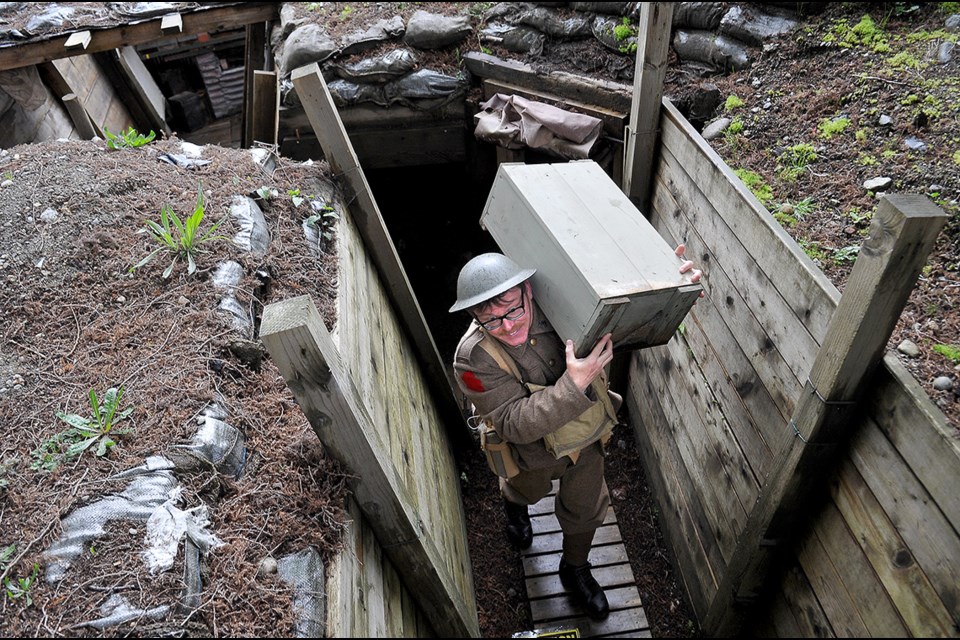Just like the war it memorializes, the time for the McKnight trench at Port Moody’s Station Museum is coming to an end.
John Grasty, the president of the Port Moody Heritage Society’s board of directors that runs the museum, told the Tri-City News the trench will be decommissioned and the ground levelled to make space for new programming opportunities like kids camps and summer sessions that focus on archeology and the city’s Indigenous heritage.
He said he hopes the work can be completed by next spring.
The McKnight trench was constructed in 2014, then expanded the next year, as a tribute to the 100th anniversary of the outbreak of WWI.
It’s named for Lt. Augustus McKnight, an engineer from Port Moody who died in battle in France in 1916.
Port Moody resident Guy Black and John Goheen, a local historian who lead tours of remembrance for the Royal Canadian Legion, championed the project as a way to promote peace by recreating some of the real hardships of war experienced by veterans.
In fact, Goheen said, trench life for soldiers at the front was so difficult, 1,000 of them died every day from disease, injury and the poor living conditions.
“It was vile and disgusting and dirty for people living in these conditions,” he said.
Eight years later, the McKnight trench has outlasted the actual war it commemorates, but Grasty believes it’s time for the museum to move on.
“Museums have to evolve,” he said, adding discussions of current issues like inclusivity and reconciliation are often rooted in a past that must be examined to give them context.
“We’re really trying to stay with the times.”
Grasty said despite the efforts of dedicated volunteers to maintain the trench and tell its stories, the structure has deteriorated to the point visitors had to be limited to guided tours.
“We’ve been patching it up with more sandbags, but it got to the point it would cost a lot to repair.”
As those costs started to exceed the amount it would take to just fill it in, Grasty said the board of directors decided decommissioning the trench would be a more prudent expenditure of its limited resources as part of an overall review of all its services and programming.
The 7/8-scale replica of a Royal Air Force S.E. 5a WWI biplane that was added to the trench display in 2018 will be retained and moved elsewhere on the museum’s property.
Grasty said the trench program exceeded all expectations.
“We’ve got a heck of a lot of mileage out of it.”
During its tenure behind the old CPR station, the trench has been visited by scores of school children, hosted candlelight vigils and meditation programs, been the backdrop for film projects and occupied overnight by re-enactors.
A dedication ceremony in 2015 was even disrupted by protestors carrying signs with anti-war messages.
Grasty said the museum is currently working with Tri-Cities Community TV on a series of short videos recounting the history of the trench project and stories of the wartime experience will still be told.
“We’ve got to focus on other areas,” Grasty said.



